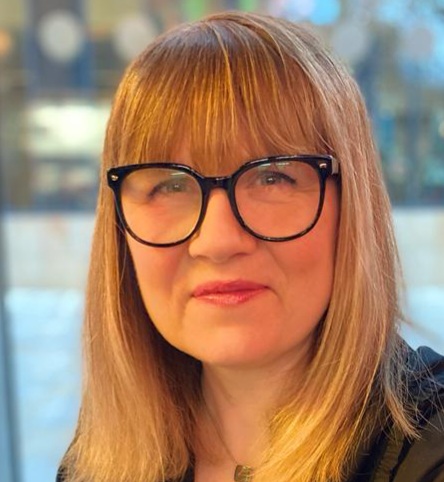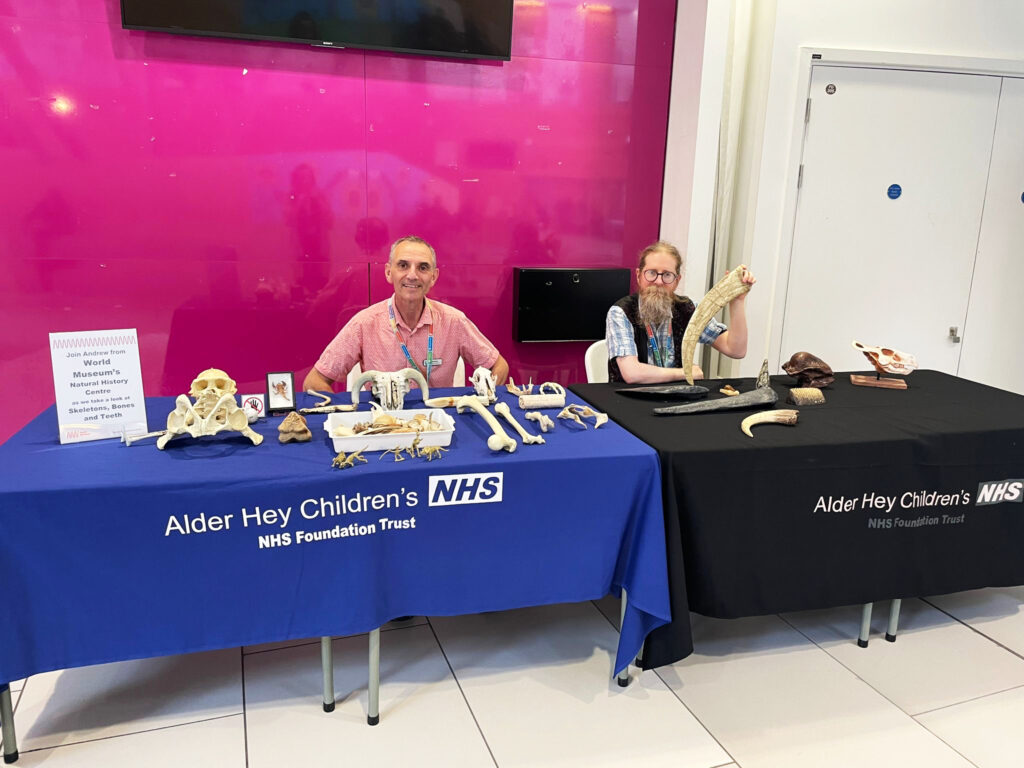Enjoy this article?
Most Museums Journal content is only available to members. Join the MA to get full access to the latest thinking and trends from across the sector, case studies and best practice advice.
Most people who work in museums would say that, deep down, they do so because museums make them happy. The intrinsic joy that culture and heritage bring to people has long been recognised, but it is only in more recent years that it has been studied and quantified.
Health and wellbeing programmes at museums began proliferating about 15 years ago, and have been promoted by initiatives such as the Museums Association’s (MA) Museums Change Lives campaign to promote the social impact of the sector.
This wasn’t solely about the feelgood factor – work in this area has been a vital way to demonstrate the value of the sector during an era when museums and culture have often been a soft target for funding cuts.
The pandemic highlighted just how important this area of work has become to museums. With no public access to collections, many institutions began exploring how they could engage with people in innovative ways – often centred on wellbeing – as well as supporting communities at a time of immense stress and hardship.
The huge rise in mental and physical health issues as a result of Covid means there has been no shortage of demand for this type of work since then.
Next year, the MA plans to review Museums Change Lives, with one of the campaign’s key strands, “enhancing health and wellbeing”, becoming a significant priority.
With a growing body of stats and evidence behind them, museums are becoming more confident in extolling the beneficial impact they can have on people’s happiness, health and wellbeing, and in developing partnerships with health and social care bodies.
The nature of research in this area is also evolving. Typically, there has been a focus on qualitative assessment of wellbeing outcomes, featuring individual and community testimonies – but policymakers have often expressed a need for more hard data.
To this end, a research programme established by the Department for Culture, Media and Sport, Culture, Heritage Capital (CHC), has developed a more formal approach, using economic methodologies alongside quantitative and qualitative evidence to “ensure a robust evidence base for decision-making”.
The results so far are significant. Earlier this year, Historic England published the findings of a CHC research project examining the relationship between heritage density and life satisfaction. The research demonstrated that “the very existence of cultural heritage in a place impacts residents’ quality of life, above and beyond individual usage patterns”.
The report says: “The research findings show that there is a positive and statistically significant relationship between the density of heritage assets near one’s residence and self-reported life satisfaction. A doubling of the density of heritage assets within a 1km radius is associated with a 0.025 rise in life satisfaction scores.”
This comes with an economic benefit too; nationally, living in close proximity to heritage is found to be associated with wellbeing gains in the region of £29bn per annum in England, according to the report.
But how can simply being in proximity to cultural heritage affect wellbeing? The report says: “Restorative environments stimulate positive psychological outcomes including reducing feelings of stress, anxiety and fatigue, and increasing feelings of safety, among others, in this way impacting long-term health and wellness.”
Its authors hypothesise that historic environments are examples of restorative environments, and that the public can benefit “through both active and passive interactions” with them.
Such findings come as no surprise to those on the ground. Vicky Charnock is the arts coordinator at Alder Hey Children’s Hospital in Liverpool.

The hospital runs an Arts Council England-funded programme, Creative Pathways, in partnership with Tate Liverpool, National Museums Liverpool (NML) and DaDafest, a D/deaf and disability arts charity.
The initiative has seen creative practitioners host residencies in the hospital’s wards and mental health inpatient unit. These have included handling sessions with NML’s palaeontology, Egyptian and maritime collections.
“They went down an absolute storm with the children and young people,” says Charnock. Patients who show particular interest in these demonstrations are then offered one-to-one social prescribing sessions.
“We’ve just recently finished a programme with a young man who’s a mental health patient out of mainstream education. He has been going to the World Museum for 10 one-to-one sessions with our dinosaur expert, ‘Dino Dave’,” she says.
As a result of the sessions, the patient is now considering career options in palaeontology. “We saw him change his outlook, which was fantastic,” says Charnock.

Social prescribing has flourished in recent years and is a key opportunity for museums to contribute to healthcare agendas.
“Like every other hospital in the UK, we’ve seen a huge rise in admissions following the pandemic, and we find that this one-to-one provision is particularly successful in getting young people re-engaged and reconnected with the outside world, tapping into interests that they might have had before,” says Charnock.
Getting buy-in for the programme from stakeholders – clinicians, museum professionals, families and patients themselves – has not been a problem either, according to Charnock.
“There’s no buy-in needed,” she says. “Everybody’s absolutely onboard. Clinicians here fully recognise the benefits of this, and we can’t meet the demand. At times, it’s quite overwhelming.”
It’s no secret that the nation’s health service is near breaking point, with the UK’s new government elected on a platform that centred on saving the NHS.
In September, prime minister Keir Starmer announced a major programme of reform to the health service.
Given the pressures on the NHS, it is unlikely that partnerships such as Creative Pathways – which was made possible through arts council and charitable funding – will become a core part of its provision, despite their successful outcomes, because funding for clinical staff and services will always take priority.
Charnock says: “I don’t think arts and health are going to be part of those discussions, despite the overwhelming evidence and research out there about how transformative they could be.”
But cultural institutions have a strong case that, with holistic investment, they can play a role in easing pressures on health and social care.
“You have to talk the NHS language and, bluntly put, that language is about saving money,” says Charnock.
“Ultimately, it’s about treatment and getting patients off waiting lists and getting them out of hospital more quickly. So you have to be able to make the case that this kind of arts intervention work ultimately saves the NHS money.”
The culture sector has become much more adept at talking the outcome-focused language of the health and social care sectors than it used to be.
“They are different worlds – different languages,” says Charnock. “I always saw my role as an arts coordinator as the bridging point for each of those parties. I’ve seen over the years, the arts sector is embracing the language of health much more and talking much more in those terms.”
The coming years will be a crucial opportunity for the UK’s arts, culture and heritage organisations UK to consider how they can contribute to the health and wellbeing agenda – and ultimately bring joy to the lives of the people who need it most.
“This job is joyful and I feel very privileged and lucky to work with so many amazing families, children and young people who go through the most awful, challenging experiences,” says Charnock.
“When you see a child smile, or a family really grateful for having experienced something in the arts while they’re in the hospital’s care, that’s a lovely moment that gives me a warm and fuzzy feeling.”
Ongoing public investment is vital
Museums’ role in enhancing the health and wellbeing of our communities has gone from strength to strength in the past few years.
During Covid, museums provided support for online learning and engaged communities in street exhibitions and online performances.
During the current cost-of-living crisis, museums are supporting communities by providing warm and safe spaces for reflection and enjoyment.
Research has demonstrated that being in museums and engaging with collections and stories can enhance your physical and mental health, and help overcome social isolation.
Despite the financial challenges that the sector is facing, museums of all sizes across the whole of the UK are working with their communities to provide engaging and innovative experiences – and they need ongoing public investment to carry on doing this.
Sharon Heal is the director of the Museums Association
Most Museums Journal content is only available to members. Join the MA to get full access to the latest thinking and trends from across the sector, case studies and best practice advice.
You must be signed in to post a comment.
Museums do change lives and more funding opportunities for the sectors work in Health and Wellbeing is greatly needed. These is so much more the sector can do if only we had the resources. We need innovative ways to find financial support outside of the traditional funding bodies. Suggestions?